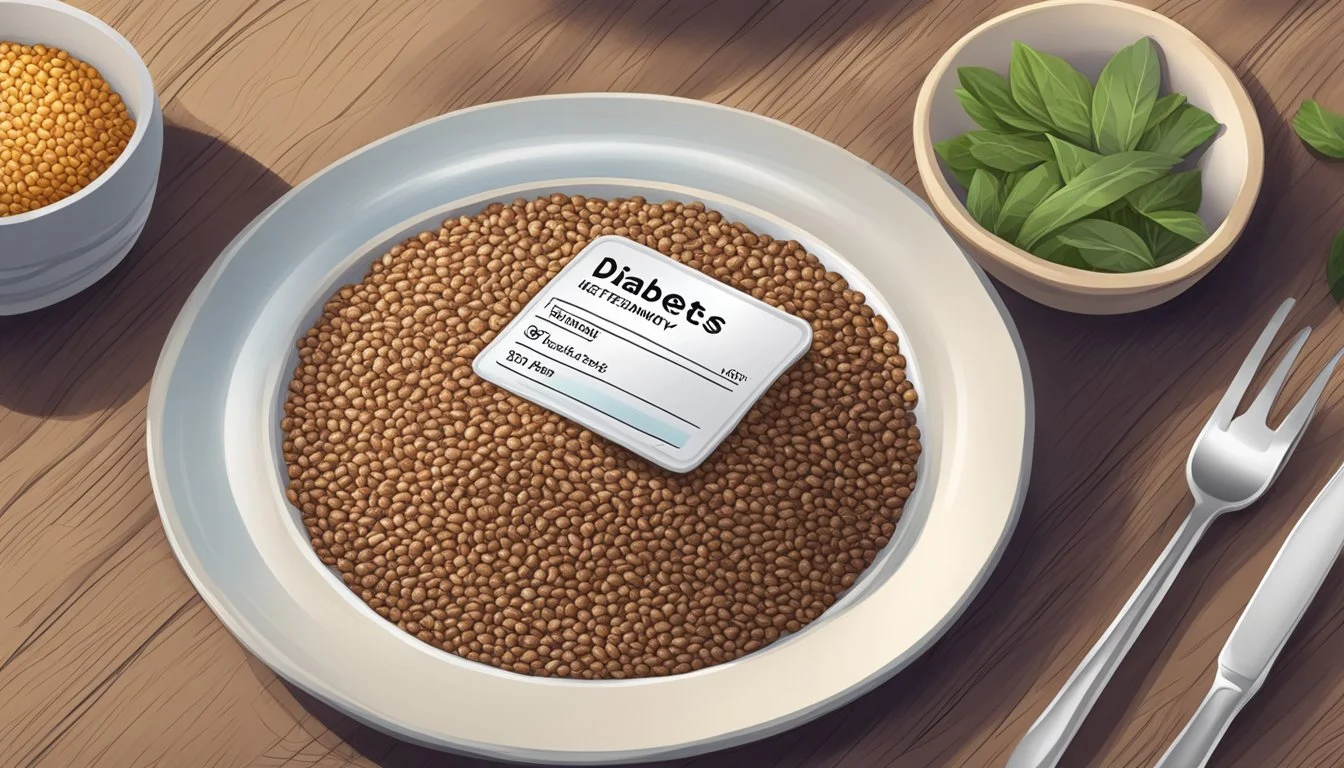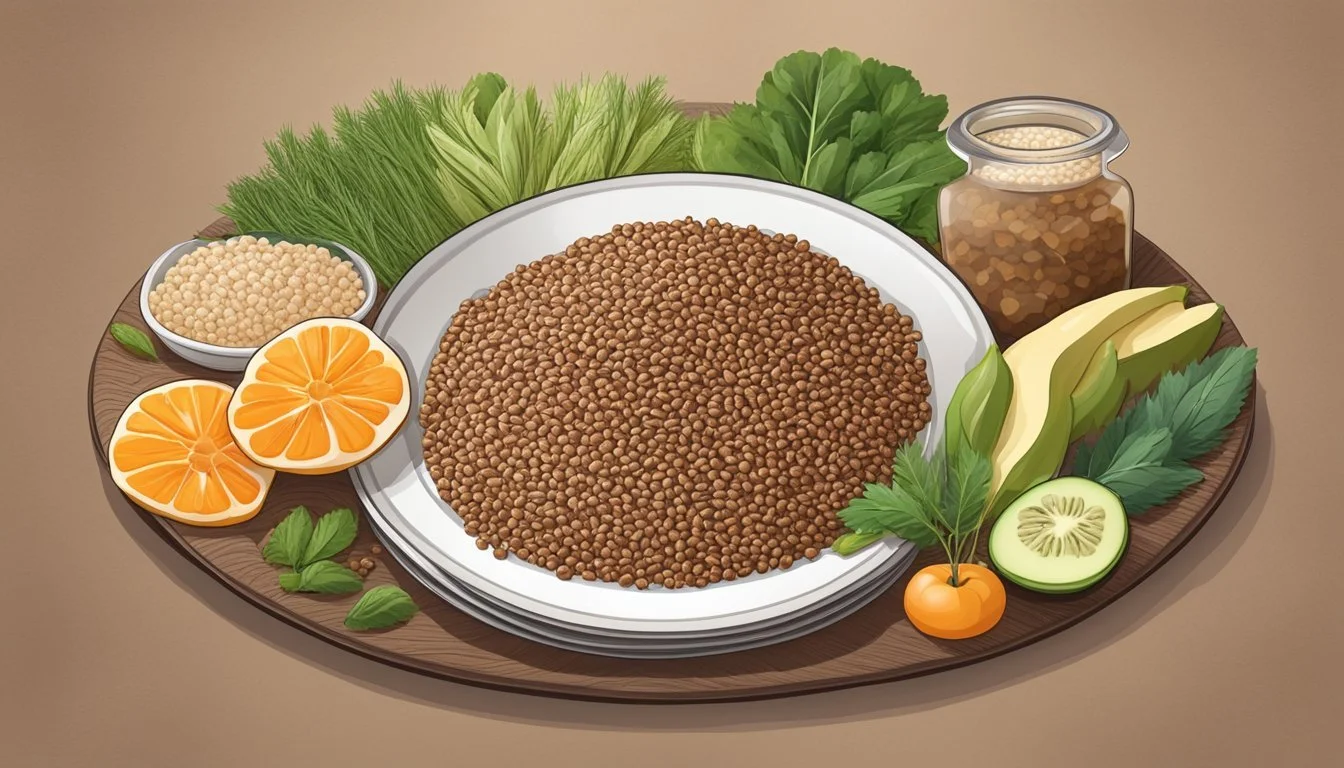Can Diabetics Eat Teff?
Benefits and Considerations
Teff, a tiny ancient grain originating from Ethiopia, is gaining popularity for its impressive nutritional profile. Rich in fiber, iron, and calcium, teff is particularly noted for its potential benefits for people with diabetes. Adding teff to a diabetic diet may help in managing weight, reducing fat accumulation, and controlling blood sugar levels.
Research suggests that the grain’s high fiber content can slow the absorption of sugars, preventing spikes in blood glucose. Additionally, teff contains beneficial minerals and omega-3 fatty acids, which can improve insulin resistance and reduce inflammation. By including teff in their diet, diabetics can leverage these advantages to better manage their condition.
For those searching for a versatile, gluten-free grain, teff can be used in various culinary applications, from flour in baking to a whole grain in salads and porridges. These versatile uses make it not only a nutritious choice but also a convenient one for diabetic meal planning.
Understanding Diabetes and Diet
Diabetes management requires careful dietary planning to regulate blood sugar levels effectively. Key elements include the role of diet in diabetes management and the importance of whole grains and fiber in stabilizing blood sugar levels.
Role of Diet in Diabetes Management
The right diet plays a crucial role in managing diabetes. For individuals with diabetes, keeping blood sugar levels within a target range is essential. Carbohydrates significantly impact blood sugar levels. Thus, foods with a low glycemic index (GI) are recommended.
In addition, it's important to consume balanced meals that include non-starchy vegetables, lean proteins, and healthy fats. These components help regulate blood sugar peaks. Monitoring carbohydrate intake also helps in managing insulin requirements.
Protein sources like meat, poultry, fish, eggs, and plant-based proteins provide essential nutrients without raising blood sugar levels significantly. Moreover, healthy fats such as avocados, nuts, and seeds are beneficial in maintaining stable glucose levels.
Importance of Whole Grains and Fiber
Whole grains and fiber are vital for diabetes management. Whole grains, unlike refined grains, contain all essential parts of the grain, providing more nutrients and fiber. Examples include teff, quinoa, and brown rice.
These grains have a lower glycemic index, which means they cause a slower, moderate rise in blood sugar levels. Fiber aids in digestion and slows the absorption of carbohydrates, reducing blood sugar spikes after meals.
Foods high in fiber include vegetables, fruits, whole grains, beans, and legumes. Incorporating these into a diabetic diet can promote better blood sugar control. For instance, teff, a whole grain, is particularly beneficial due to its high fiber content and low glycemic index, making it suitable for diabetic meal plans.
What Is Teff?
Teff, a tiny and ancient grain native to Ethiopia, is prized for its nutritional richness and versatility in cooking. This gluten-free grain has been a staple in Ethiopian cuisine for centuries.
Nutritional Profile of Teff
Teff is a nutrient-dense grain, containing significant amounts of protein, fiber, and essential amino acids. It's particularly rich in minerals like calcium, iron, magnesium, potassium, and phosphorus, which support various bodily functions.
One cup of cooked teff provides:
Calories: 255
Protein: 10 grams
Fiber: 7 grams
Calcium: High levels, beneficial for bone health
Iron: Supports oxygen transport in the blood
Teff is also low in fat and contains beneficial vitamins such as B vitamins and vitamin C, making it an excellent option for various dietary needs, including vegetarian and gluten-free diets.
Teff in Traditional and Modern Cooking
In Ethiopia, teff is primarily used to make injera, a spongy, sourdough flatbread that is a staple in many meals. The flour from teff can also be used to make porridge, soups, and baked goods, offering a nutritious alternative to wheat flour.
Traditional Uses:
Injera: Main component of Ethiopian meals
Teff porridge: Often consumed for breakfast
Modern Uses:
Gluten-free baking: Ideal for bread, muffins, and pancakes
Thickening agent: Used in soups and stews
As teff gains popularity globally, it is increasingly found in health-conscious kitchens for its nutritional benefits and culinary flexibility. Whether in traditional Ethiopian dishes or modern gluten-free recipes, teff's rich nutrient profile and adaptability make it a valuable addition to any diet.
Teff's Glycemic Impact
Teff's glycemic impact is significant due to its low glycemic index and its ability to aid in blood sugar regulation. This section explores these aspects in detail, highlighting how teff compares to other grains and its role in managing diabetes.
Glycemic Index of Teff Compared to Other Grains
Teff is notable for its low glycemic index (GI). Foods with a low GI cause a slower rise in blood sugar levels, which is crucial for diabetic patients. Teff's GI ranges from 20 to 40, depending on the variety and preparation method.
In comparison, common grains like white rice and wheat have much higher GIs, typically above 70. This makes teff advantageous for individuals looking to manage their blood sugar.
White teff tends to have a slightly higher GI compared to brown or mixed variants. However, all types remain significantly lower than processed grains. Its low GI is complemented by a high fiber content, which further slows carbohydrate digestion.
Blood Sugar Regulation and Teff
Teff’s low GI and high fiber content contribute to better blood sugar regulation. Fiber in teff aids in slowing down carbohydrate absorption, leading to a gradual increase in blood sugar levels rather than sharp spikes. This slow digestion process helps in maintaining stable glucose levels.
Beyond fiber, teff is rich in essential amino acids and micronutrients like magnesium and zinc, which play supportive roles in metabolic processes and insulin sensitivity. Consuming whole grains like teff can be a beneficial part of a diabetes management plan.
Studies suggest that diets incorporating low GI foods, such as teff, can improve overall glycemic control. This makes teff an ideal option for individuals aiming to maintain healthy blood sugar levels.
The Benefits of Teff for Diabetics
Teff offers numerous health benefits for diabetics, particularly in regulating blood sugar levels, supporting weight management, and improving heart health. It provides a rich source of fiber, essential minerals, and complex carbohydrates that can benefit individuals with diabetes.
Supporting Blood Sugar Control
Teff has a low glycemic index, which means it releases glucose slowly into the bloodstream.
This slow release prevents spikes in blood sugar levels, making it ideal for diabetics. Complex carbohydrates present in teff provide sustained energy without causing significant fluctuations in blood glucose.
Additionally, teff is rich in fiber, particularly soluble fiber, which can help manage blood sugar levels. Soluble fiber slows the absorption of sugar, contributing to better glycemic control. Adequate fiber intake is essential for diabetics to maintain stable blood sugar levels throughout the day.
Encouraging Weight Management
Including teff in the diet can aid in weight management, a crucial aspect for diabetics.
With its high fiber content, teff promotes a feeling of fullness, helping reduce overall calorie intake. Soluble fiber in teff absorbs water and expands in the stomach, creating a sensation of satiety that can help prevent overeating and support weight loss efforts.
Moreover, the complex carbohydrates in teff provide a steady, sustained release of energy, potentially reducing the frequency of hunger pangs and the temptation to snack on high-calorie, low-nutrient foods.
Improving Heart Health
Diabetics often have a higher risk of heart disease. Including teff in the diet can contribute positively to heart health.
Teff is a good source of essential minerals like magnesium and potassium, which play key roles in maintaining heart health. Magnesium helps regulate heart rhythm and muscle function, while potassium can help control blood pressure, reducing strain on the cardiovascular system.
Furthermore, the whole grain nature of teff contributes to better lipid profiles, potentially lowering bad cholesterol levels. Lower cholesterol levels are beneficial in reducing the risk of heart disease and improving overall cardiovascular health for diabetics.
Incorporating Teff into a Diabetes Diet
Incorporating teff into a diabetes diet can be beneficial due to its low glycemic index, high nutritional content, and versatility. The following sections provide meal ideas, substitution tips, and planning considerations for using teff effectively.
Teff-Based Meal Ideas
Breakfast: Start the day with teff porridge. Use 1 cup of teff grains simmered in 3 cups of water or milk until thickened. Add nuts, seeds, and berries for additional fiber and nutrients.
Lunch: Prepare a teff grain salad. Mix cooked teff with diced vegetables, lean proteins like chicken or tofu, and a light vinaigrette. This makes for a balanced, nutrient-rich meal.
Baking: Replace some or all of the flour in bread and muffin recipes with teff flour. It adds a nutty flavor and boosts the nutritional profile of baked goods.
Dinner: Incorporate teff into soups or stews as a thickener, or serve it as a side dish similar to quinoa or rice, providing a nutritious and satisfying base.
Teff as a Substitute for Other Grains
Teff can be an excellent substitute for other grains in a diabetes diet.
Rice Substitute: Use cooked teff in place of white or brown rice. Its lower glycemic index helps maintain stable blood sugar levels.
Flour Alternative: In baking, teff flour can replace wheat flour. This is especially beneficial for those needing gluten-free options. Use it in pancakes, bread, or cookies to add nutrition without spiking blood sugar.
Pasta Swap: Teff pasta is another alternative for traditional wheat-based pasta. It provides the familiarity of pasta dishes while supporting glycemic control.
Summary Table:
Traditional Grain Teff Alternative White Rice Cooked Teff Grain Wheat Flour Teff Flour Wheat Pasta Teff Pasta
Considerations for Meal Planning
When incorporating teff into meal planning, keep portion sizes and overall carbohydrate intake in mind to manage diabetes effectively.
Carb Counting: Teff contains carbohydrates, so it’s crucial to count these towards daily intake targets. Measure portions to prevent unintended spikes in blood sugar.
Balanced Meals: Combine teff with lean proteins and healthy fats to ensure balanced meals. This approach aids in maintaining stable blood sugar levels throughout the day.
Fiber Intake: Teff is rich in dietary fiber, which can improve digestive health and help manage blood sugar levels. Incorporating teff into several meals across the day can support overall dietary fiber goals.
Meal Prep: Prepare large batches of teff-based dishes ahead of time. This practice saves time and ensures that healthy, diabetes-friendly options are always available.
Safety and Recommendations
Teff can be a nutritious addition to a diabetic diet, but it’s important to be mindful of portion sizes and potential side effects associated with its consumption.
Daily Intake and Portion Sizes
Diabetics should consider portion control when incorporating teff into their diet. Teff is a whole grain that is rich in fiber and nutrients but also contains carbohydrates that can impact blood glucose levels. A recommended serving size is typically about ½ cup of cooked teff, which contains approximately 125 calories and 25 grams of carbohydrates.
When planning meals, it’s beneficial to balance teff with non-starchy vegetables, lean proteins, and healthy fats to help manage A1C levels.
Incorporating teff into a balanced diet can contribute to a healthier glycemic index, potentially aiding in blood glucose control.
Potential Risks and Side Effects
While teff is generally considered safe, it can contribute to allergies in rare cases. If someone experiences symptoms like itching, rash, or difficulty breathing, they should discontinue use and consult a physician.
Excessive consumption of teff might lead to an increased intake of phytic acid, which can interfere with the absorption of minerals such as calcium, iron, and zinc.
Individuals should also monitor their blood glucose levels regularly when adding new foods to their diet, especially grains like teff, to observe any significant changes.
Conclusion
Teff can be a beneficial grain for people with diabetes. Its low glycemic index (GI) makes it a good option for managing blood sugar levels.
Teff is rich in essential amino acids, fatty acids, and minerals. These nutrients support overall health, which is crucial for diabetic patients.
The high fiber content in teff helps in slowing down the absorption of carbohydrates. This can reduce blood glucose spikes.
Nutritional Value of Teff (per 100g):
Nutrient Value Carbohydrates 73g Fiber High Calcium Significant
Due to its low phytic acid content, teff improves mineral absorption, which can be advantageous for diabetic individuals.
Incorporating teff into a balanced diet can provide substantial health benefits without sharply increasing blood sugar levels.






